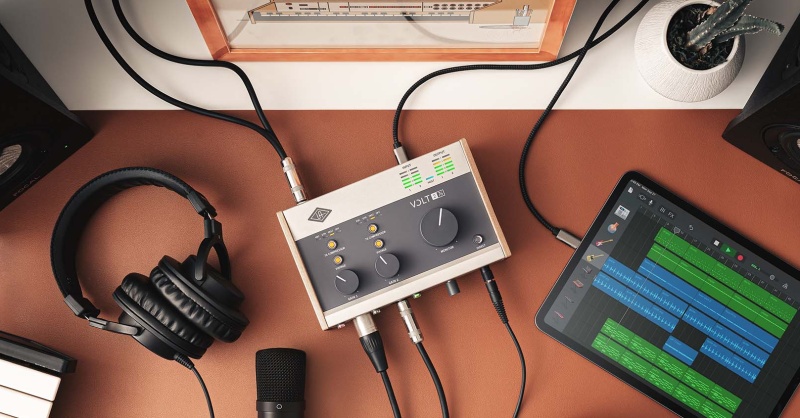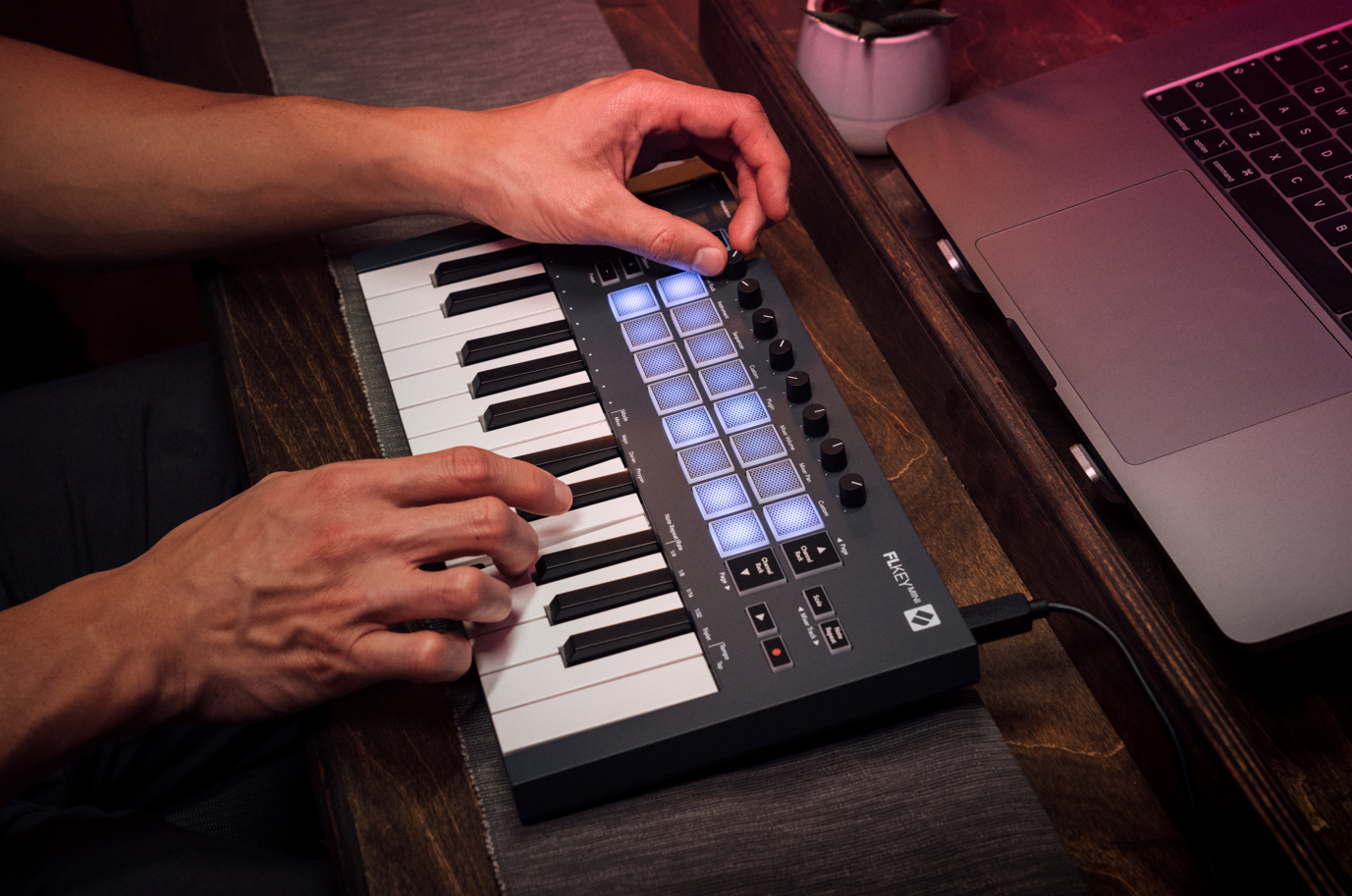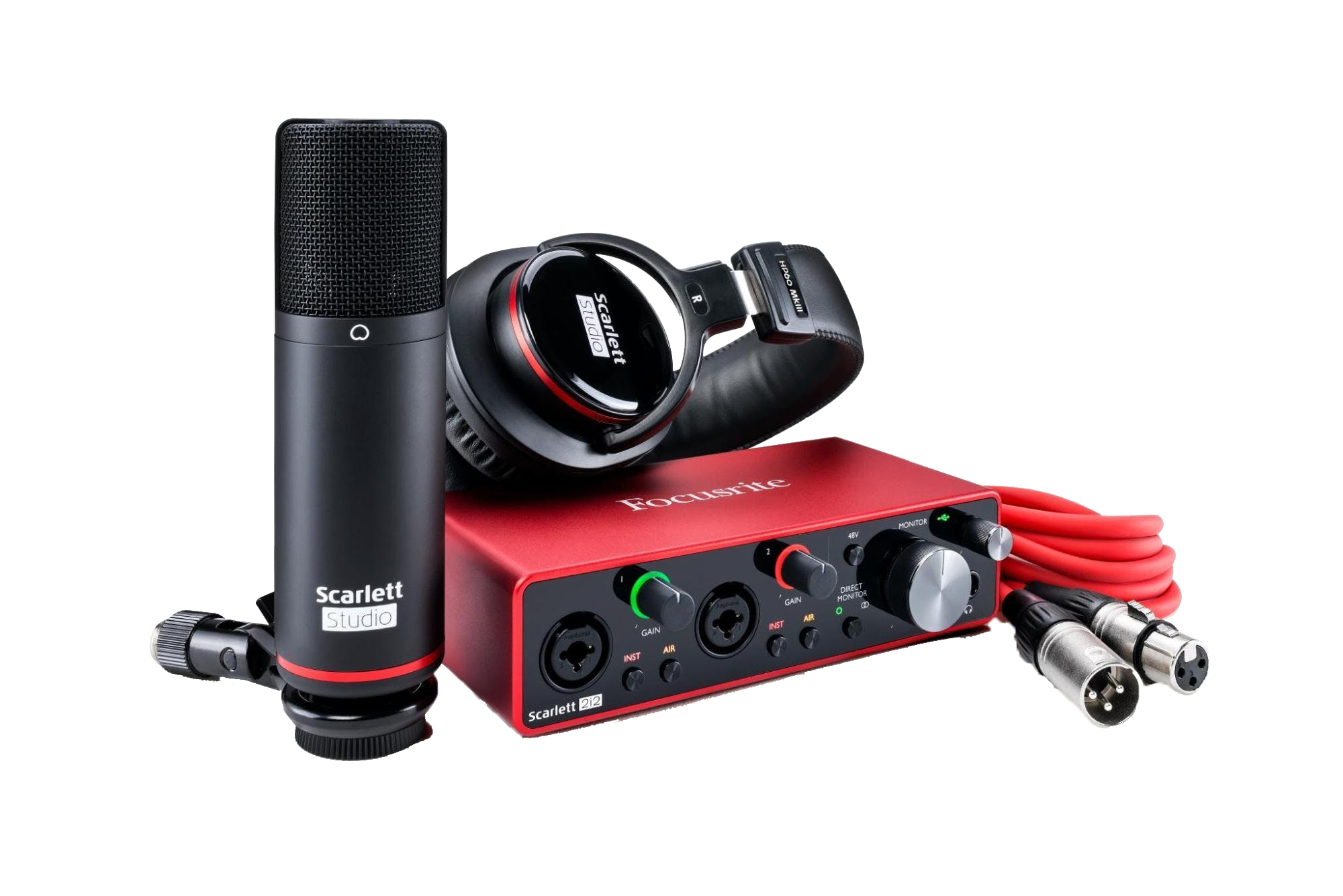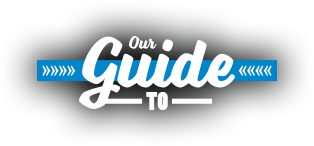You’re looking to start recording at home, but which key pieces of equipment do you need to get going? Recording and pro audio hardware can be a headache at the best of times, even for those who know their stuff. That’s why we’re here to help you get your head round all the basics of the main types of home recording gear!
Click the tiles below to navigate to drop down to the relevant section!
Audio Interfaces
An audio interface is essential for any recording setup. It’s your recording hub and handles the bulk of your connections, including your mics and monitors.
An audio interface takes electrical signals from mics, instruments etc. and coverts it to a digital signal for a computer to process. It also does the reverse process, converting the digital signal from your computer to an analogue signal for your monitors to play back.
Using the interface’s controls, you’ll be able to adjust volume of your listening device (whether that be monitors or headphones) and the preamp’s gain to control sensitivity to incoming signals. The better the on-board preamps, the better sounding your recording will be.
Many interfaces come with trial or light versions of recording software such as Ableton and FL Studio, which is very convenient if you’re just getting started as it’s one less thing to have to sort out.
Shop All Audio Interfaces How to Choose an Audio Interface Guide

Condenser Microphones
If you want to do any kind of recording, you’re going to need a microphone. And if you’re going to choose one type of microphone for your first purchase, large-diaphragm condenser mics are a great choice because they’re so versatile.
Condensers are sensitive and great for capturing nuance and detail of an audio source. They’re great for vocals, acoustic instruments like guitars and room mics to capture that extra magic in the air.
Due to their sensitivity, they may pick up unwanted room noise while recording but using an isolation booth or reflection filter will help you to reduce the amount of potential noise in your recordings.
Pop filters are designed to prevent unwanted plosives (strong P and B sounds, for example) from being overbearing in your recording. Placing one between you and your microphone can have a hugely beneficial effect on the quality of your recordings.
A microphone stand is also a key piece of equipment. When recording, you’re going to want your mic to be held in place and aimed at whatever it is that you’re recording, whether it be your voice or a guitar cab.
Shop All Condenser Microphones How to Choose a Condenser Microphone Guide

Studio Monitors
Studio monitors play audio sent from your audio interface. They provide a flat and natural sound compared to Hi-Fi speakers, which are designed to colour the sound by boosting bass or rolling off certain frequencies. Providing a natural sound is ideal for being able to accurately hear what your mix is truly sounding like.
You’ll also want to get hold of some stands or foam blocks for your monitors. This is to isolate the sound and reduce the amount of low-end transmitted through your desk, and potentially your walls.
There are tons of high-quality, affordable monitors available here at Andertons, including some great bundles to get you started.
Shop All Studio Monitors How to Choose Your Studio Monitors Guide

Headphones
Of course, another way to listen back to your recordings is through headphones. This is ideal if you need to keep the noise down or want to check your mix on-the-go.
The two main types of headphones are closed-back and open-back. We won’t get too bogged in all the technical differences here, but basically closed-back headphones are the go-to choice for tracking and recording. This is because they are less likely to leak sound compared to open-backs, which have vents allowing air in and out of the ear cups. Both closed-back and open-back headphones are great for mixing and mastering but open-backs are often preferred due to their airier, out-of-the-head listening experience - closer to what you would get listening through speakers.
Closed-back headphones are generally the more common variant and are a great all-round choice to start you off if you’re not sure what you need yet.
Shop All Recording Headphones Andertons Scoreboard Winners: The Very Best Closed-Back Headphones (2022)

MIDI Keyboards
Something else you may decide you want is a MIDI keyboard. They don’t create any sounds of their own, instead they’re used to control software instruments like synths and drum kits via MIDI connection.
Most MIDI keyboards connect to the USB port of a computer, which is very handy for quick setup and portable use. They can also include a range of different features, from modulation wheels, to arpeggiators, to tactile pads for drum hits.

Other Accessories
There’s enough studio gear to talk about for a lifetime, but here are a couple of other accessories that are worth knowing about.
Shop All Studio AccessoriesCables
You’re going to need to connect all your gear somehow. Let’s go over the basics of cables so you know what you’ll need.
¼ Inch Instrument cables are what you use to connect guitars, basses, pedals, and amps primarily. They are unbalanced and use a ¼ inch jack. I’m sure you’ve all probably seen or used these at some point to plug in a guitar.
¼ Inch TRS cables look similar, however they feature an extra sleeve on the jack and are used to carry balanced signals. You’ll most commonly see these used going from the Line Outputs of an audio interface to the inputs of studio monitors.
3-pin XLR cables are most used for connecting microphones to mic inputs on audio interfaces or mixers. DI boxes also have XLR outputs which send a balanced signal for interfaces and mixers to process.
We mentioned previously how most studio monitors have a TRS input, however some only have an XLR input. In this case, you will need a TRS-to-XLR cable to send a balanced signal from your interface’s Line Output to the monitor.
On many older pieces of gear (and many modern synths), you may find a 5-pin MIDI cable input/output. If any of your equipment does have this input/output, it may be worth considering getting some MIDI cables. Many interfaces feature 5-pin MIDI ins and outs on them, so this is also something to look out for.
DI Boxes
A DI Box converts your unbalanced instrument-level signal into a balanced microphone-level signal ready for to be processed by a mixing desk or audio interface.
Because it’s a balanced signal, you’ll have much greater control over the level of the signal via preamps onboard your mixer or interface.
DI Boxes also usually feature a Thru output, so that you can route signal to an amp as well as directly out to a desk. This is especially useful for situations where you might want to simultaneously record the DI signal from the box as well as micing up the speaker cabinet.
It's worth noting that most interfaces today feature an Instrument input, which is ready to receive your unbalanced instrument-level signal and potentially eliminating the need for a DI box.
Control Surfaces
Control surfaces come in a wide variety of shapes and sizes. They can do a lot of different things and can be programmed to serve the user’s unique requirements.
They often feature rows of pads, used to trigger samples or scenes within a digital audio workstation, as well as faders and rotary knobs, used to change volumes or parameters of a channel or instrument.
Control surfaces add a tactile aspect to electronic elements of your setup, something that you can physically tweak and play with rather than just staring at a screen.
Acoustic Treatment
Acoustic Treatment controls the sound reflections inside the room for making better sounding recordings. You can buy things like diffusors to be placed on your walls or around the room to help dampen any sound you make, however they won't stop sound from escaping the room completely.
If that's what you're looking, then you need soundproofing. Soundproofing minimises the level of sound that passes through the walls by building it with heavy and dense material. This is a far more in depth topic that we won't be covering in this guide.
More Info
Follow the links below to check out all our products and other great guides to help you find what you need! If you have any feedback on this guide, or any further questions you'd like to ask us, get in touch and we'll be happy to help!
Shop All Home Recording Bundles Buyer's Guides Homepage Any More Questions? Contact Us







